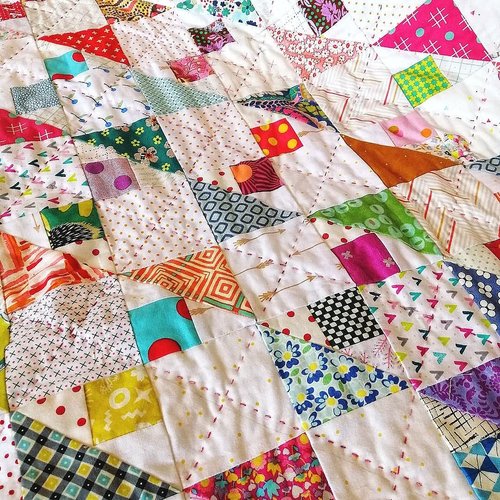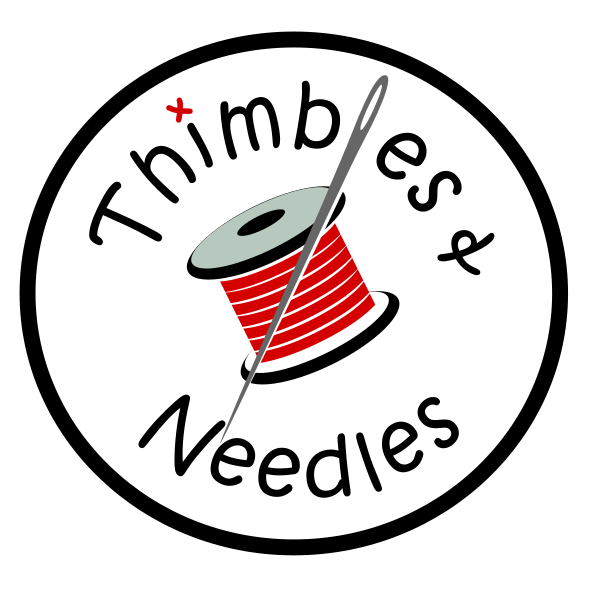
Handquilting with perle thread
Hand quilting with perle thread is a beautiful way to add bold texture and personality to your quilts. Unlike traditional fine quilting thread, perle cotton has a lovely sheen and thickness that makes stitches stand out, turning them into a decorative feature. In this post, we’ll explore the best weights of perle thread for quilting, tools and needles that make the process easier. Whether you’re outlining blocks, adding detail to borders, or enhancing negative space, perle thread gives your quilts a modern, hand-crafted finish.
Handquilting is traditionally done with finer thread but I like to use thicker thread such as Perle 8 or Perle 12.
Now, counter-intuitively, the larger the number of the thread, the thinner it is! So Perle 12 is slightly thinner than Perle 8. As a quilter, I’ve come across brands such as DMC, Anchor, Presencia, Finca and more recently Wonderfil who all manufacture Perle 8. From where I am in Australia, I find DMC and Wonderfil threads most widely available in shops. Wonderfil’s Eleganza Perle 8 thread has the most vibrant colours and feels slightly thicker, whereas DMC has more muted tones and feels a little lighter. I frequently use both depending on what I am quilting.
Perle 12 is an alternative. DMC and Aurifil brands are commonly available where I am here in Australia. Perle 12 is slightly thinner than Perle 8 and therefore glides through the quilt sandwich with less resistance and therefore easier on the hands.
Below are some examples of handquilting I’ve done on my quilts.
If it seems too daunting to hand quilt an entire quilt, perhaps start with a smaller project like a cushion. I hope you give it a try.
Making Do
I used whatever DMC Perle 8 threads I had on hand in various shades of blue on my Blueberry Kisses quilt. It goes with the scrappy nature of the quilt.
I marked the stitching lines of the circles by tracing around a cup with a light pencil. You could also use a water soluble marker but I would test it first on a scrap fabric before marking a precious quilt you have laboured over in case it leaves a permanent stain.
Quilting Through Negative Space
This is the Feel the Tide quilt, handquilted using a variegated Wonderfil Eleganza Perle 8 thread. It’s a great thread to use if you want your stitching to pop! I marked the stitching lines with a Hera marker which leaves a crease in the fabric!
Make it Stand out
Handquilting detail on the Buttons and Bows quilt. I like echoing the seam lines shapes in the quilt. When I’m piecing a quilt, I often think about how I’m going to quilt and will press seams in such a way so that I am not quilting through the seam allowance. Quilting on the opposite side to the seam allowance also helps the dark fabrics in this quilt pop. This was quilted with a variegated Wonderfil Eleganza Perle 8 thread.
How it looks on the back
If you don’t like the look of the stitches on the back of your quilt, you can camouflage with a busy backing fabric or fabric that is in the same colour as the thread.

Here is a short video demonstrating how I handquilt. I certainly don’t consider myself an afficionado on handquilting. My style has just developed over time from what I have found comfortable.
The tools that I am using are:
- Clover open ended thimble on the right middle finger
- Jeana Kimble Redwork Embroidery Needle in size 9 (needles are very personal choices so find something that works for you)
- Perle 8 thread - Wonderfil Eleganza (see my previous post about other threads that are out there)
I’m not using a thimble on my left hand in this video although I do find it helpful to wear some sort of stick on thimble (or hand tape used by sports people) to prevent lots of skin pricks on that hand.
I also don’t use a hoop and I know there are diverse opinions on this. Although some quilters insist on using a hoop for best results, I’m happy with my quilting without a hoop. If you are just trying it for the first time, I would suggest trying both ways and seeing what works for you.
When watching, click on the little square symbol on the bottom right corner to enlarge the video image.
I hope you find the video useful and give hand quilting a try!
You may also like to read about
Hand applique circle techniques



